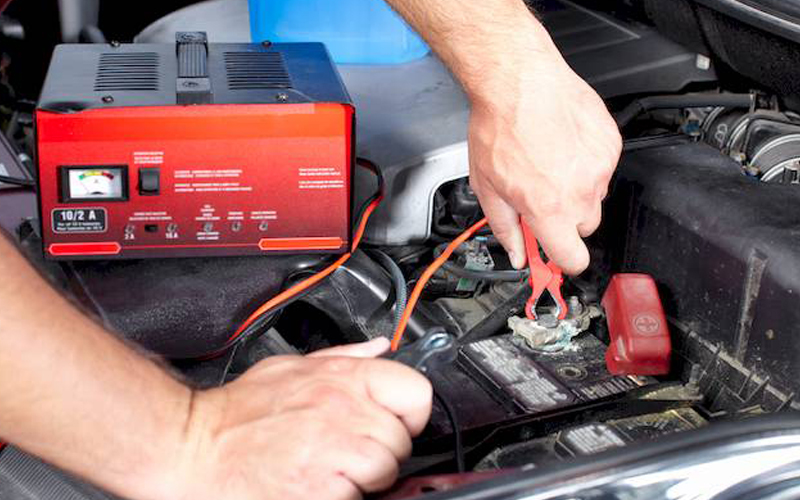Introduction to Charging Time
When it comes to batteries, knowing the exact battery Charging Time is crucial for performance, convenience, and long-term health. Whether you’re using lithium-ion, LiFePO4, or lead-acid batteries, understanding how long they take to recharge helps in planning and avoiding unexpected downtime. By accurately calculating the battery charging time, you can ensure efficiency, extend battery life, and maintain optimal usage.
What Is Battery Charging Time?
Battery charging time refers to the total duration required to recharge a battery from a certain state of discharge to full capacity. This time varies depending on battery chemistry, size, charging current, and the type of charger used. For example, a lithium-ion battery charges differently compared to a lead-acid battery, making it essential to understand these differences when calculating charging durations.
Why Use a Charging Time Calculator?
A reliable way to determine battery charging time is by using a specialized calculator. Tools like the Battery Charge Time Calculator offered by MANLY Battery make the process simple, precise, and efficient. Instead of guessing or relying on rough estimates, you can input battery specifications such as capacity, voltage, and charger current to get accurate results for how long charging will take.
Factors Affecting Charging Time
Several key elements influence the total battery charging time, and understanding them helps you manage charging more effectively.
Battery Capacity
The larger the capacity (measured in ampere-hours, Ah), the longer the battery charging time. For instance, a 100Ah battery will naturally take longer to charge than a 20Ah one, assuming the same charger is used.
Charger Current
The higher the charging current supplied by the charger, the shorter the charging duration. However, not all batteries can safely handle high charging currents, making it important to follow manufacturer recommendations.
Battery Chemistry
Lithium-ion, LiFePO4, and lead-acid batteries all have different charging profiles. Lithium batteries typically charge faster, while lead-acid batteries may require longer absorption and float phases.
State of Charge
If your battery is only partially discharged, the battery charging time will be shorter compared to a fully discharged state.
Charging Time for Lithium-Ion Batteries
Lithium-ion batteries are widely used due to their high energy density and relatively short battery charging time. A lithium-ion battery can often reach 80% capacity quickly, with the remaining 20% taking longer due to slower top-off charging. Using a quality charger ensures safety, efficiency, and extended lifespan.
Charging Time for LiFePO4 Batteries
LiFePO4 batteries are known for safety, stability, and long cycles. Their battery charging time is efficient because they can accept higher charge currents compared to lead-acid batteries. With the right charger, they can be recharged to full capacity much faster, making them ideal for renewable energy systems, electric vehicles, and backup power.
Charging Time for Lead-Acid Batteries
Lead-acid batteries generally have the longest battery charging time. They require a bulk, absorption, and float phase to complete charging safely. Depending on capacity and charger size, they may take several hours to reach full charge, making them less efficient for applications that demand quick recharge cycles.
Fast Charging vs Normal Charging
Fast charging significantly reduces battery charging time, but it may generate extra heat and stress, potentially shortening the battery’s lifespan if not managed properly. Normal charging, while slower, is gentler on the battery and helps maintain long-term health. Striking the right balance between speed and safety is essential for optimal performance.
Step-by-Step Calculation of Charging Time
To estimate battery charging time, the following formula is commonly used:
Charging Time (hours) = Battery Capacity (Ah) ÷ Charger Current (A) × 1.2
The factor of 1.2 accounts for efficiency losses. For example, a 100Ah battery charged with a 10A charger would take approximately 12 hours.
Advantages of Using MANLY Battery’s Calculator
MANLY Battery’s calculator provides instant, accurate results for battery charging time across various battery types. It removes the guesswork, ensures safe operation, and helps users plan their energy use better. Whether for residential, commercial, or industrial applications, this tool enhances efficiency.
Why Accurate Charging Time Matters
Accurate knowledge of battery charging time prevents overcharging, reduces downtime, and protects against damage caused by improper charging. This ensures not only better performance but also longer battery lifespan and cost savings over time.
Conclusion
Understanding and calculating battery charging time is critical for maximizing efficiency, safety, and performance. With advanced tools like the MANLY Battery charging time calculator, users can confidently determine how long their batteries will take to charge, whether using lithium-ion, LiFePO4, or lead-acid technologies. By factoring in battery capacity, charger current, and chemistry, accurate estimates become simple and reliable.
